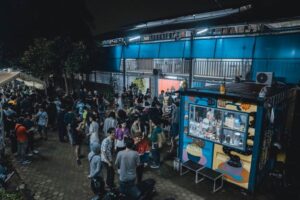Pilot study
"Political Bargaining between Shan Sawbwas and Colonial Officials during the British Burma period (1937-1948)"
R4 2-1 (R4 AY2022)
| Project Leader | Kikuchi Taihei (Osaka University, Graduate School of Language and Culture Studies in Language and Culture) |
| Research Project | Political Bargaining between Shan Sawbwas and Colonial Officials during the British Burma period (1937-1948) |
| Countries of Study | Myanmar |
Outline of Research
This study examines the demands for autonomy by Shan chiefs (hereinafter referred to as “Sawbwa”) during negotiations with colonial officers in Burma from 1937 to 1948. Sawbwas were seen as minions of the British colonial system, so their political intentions during the period were mostly ignored. Yet, historical documents written by British officers show that the Sawbwas repeatedly sought autonomy for the Federated Shan States. In this study, their political claims are examined by collecting and analyzing historical materials in the British Library and the National Archives of the United Kingdom.
Purpose of Research, Its Significance and Expected Results, etc.
Burma became a British colony in 1886 after the third Anglo-Burmese War. The colonial administration established direct rule in the mainland, where the Burmese were the majority, and indirect rule in the frontier areas, where ethnic minorities lived.
The Shan States were in the frontier areas, and the British, who had abolished the Burmese dynasty, took control of the Sawbwas and ruled indirectly through them. In 1922, the Shan States were reorganized into the Federated Shan States, preceding the administrative reforms in the mainland. The Sawbwas were being allowed to govern their own territories and became members of an advisory council led by a commissioner on behalf of the Governor of Burma. Thus, the Sawbwas have been accused in historical accounts as collaborators of the colonial system and the British “divide and rule” policy, and as barriers to national unity.
However, considering the negotiations held during the Burma Roundtable (1931-32) and administrative documents written in the postwar period, we find that the Sawbwas were lobbying the colonial administration for gradual development of Shan autonomy, and that one of their proposals was the unification of the Shan States. What kind of autonomy did they demand?
We may find answers to this question by examining the negotiations between the Sawbwas and the colonial administrators in charge of the frontier areas administration during the British Burma period (1937-1948). On one hand, the Sawbwas made several representations to make sure their status and annual grant from the Government of Burma in this period. This is because they concerned about extended influences of the Burma proper on the Federated Shan States when the Burma proper was separated from India and got the constitutional advance toward self-government.
On the other hand, some of the administrators with a background in anthropology intended to the future union of the Federated Shan States with Burma proper while they recognized the importance of protecting ethnic minorities. This included Henry Noel Cochrane Stevenson, a Burma Frontier Service Officer who understood the Chin cultures well and who served as Director of the Frontier Areas Department after the war. When the colonial administration returned to Burma after WWII, Stevenson proposed the unification of the separately governed frontier regions of Burma and their union with the mainland.
This colonial policy obviously stimulated the Sawbwas’ discussion and prompted them to union and convene political meetings, the Mongkhung Conference, and two Panglong Conferences which are now regarded as the symbol of national unity. If the arguments made by Sawbwas from the 1930s to the postwar period had any impact on the discussion over the federation with Burma proper at the Independence as well as on the colonial administrator’s knowledge about ethnicity and their policy proposals, it can be said that Myanmar’s national unity had been prepared by the Sawbwas. In this study, we can find the Sawbwas’ contribution towards the construction of Union of Burma.




